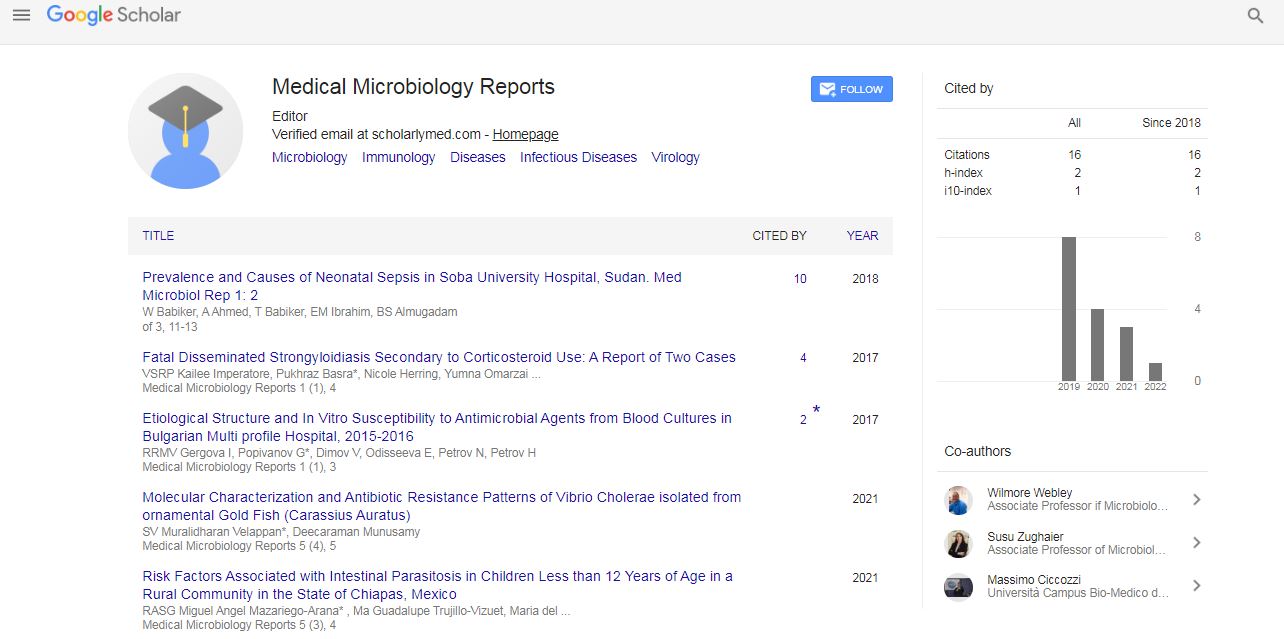Invasive yeast infection - Complication in critically ill surgical patient
Jana Simonova
Pavoj Jozef Safarik University, Slovak Republic
: Med Microbiol Rep
Abstract
Statement of the Problem: Invasive yeast infections are serious systemic infections associated with high mortality. Candidiasis is currently a problem of intensive medicine where its incidence is rising. In large faculty hospitals, candidiasis is the fourth most common infection in the blood stream. Data from Slovakia confirm an increase in the incidence of candidiasis, with the current incidence at 2.16/100,000 habitants per year. Compared to the last published national epidemiological study, the ratio of C. albicans and non-C. albicans candidiasis has also changed in favour of non-C. albicans strains of yeast. The greatest increase was recorded for C. parapsilosis and C. glabrata. Acute necrotizing pancreatitis is a life-threatening illness and proper timing of antimicrobial and antifungal treatment is one of the key therapeutic approaches used to treat it., because these patients are at high risk of developing an invasive yeast infection. According to ECIL-6 and IDSA recommendations, echinocandins and liposomal amphotericin B are the first-line drugs in the initial and firstline treatment of candidiasis in both neutropenic and nonneutropenic patients. Methodology: An case report of a 31-years-old woman admitted to the 1st Department of Anaesthesiology and Intensive Care in septic shock after surgical intervention – because of CT verified acute necrotizing pancreatitis. Findings: Using the MALDI Bio Typer system C parapsilosis from the blood was obtained. Despite the fact, that MIC of anidulafungin was 0,38ug/ml (Table 1), treatment with anidulafungin was ineffective, C .parapsilosis was repeatedly detected in the blood. Then lipid form of amphotericin B was included in the treatment. After its inclusion at a dose of 400 mg i.v. daily, together with targeted antibacterial therapy, a gradual decrease in inflammatory parameters was registered, blood culture has become sterile. Conclusion & Significance: Lipid form of amphotericine B was effective in the treatment of invasive candidiasis without warsening of renal function.
Biography
Jana Simonova deals with the issue of bacterial and fungal infections in intensive patients at the University Hospital L. Pasteur and at the Medical Faculty of the Pavol Jozef Safarik University
E-mail: jana.simonova@unlp.sk
 Spanish
Spanish  Chinese
Chinese  Russian
Russian  German
German  French
French  Japanese
Japanese  Portuguese
Portuguese  Hindi
Hindi 
